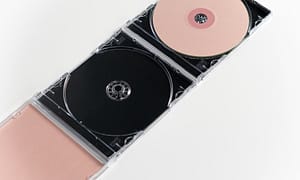
Wearable technology that uses sweat to measure stress is not new, but it has only now begun to move from research and development into the consumer market. These new wearables can be categorized as biometric devices or biofeedback mechanisms. Biometric measurements used to study stress include blood pressure and heart rate. Biofeedback mechanisms used for stress measurement are often classified as self-regulation exercises such as meditation, yoga, and progressive muscle relaxation.
A considerable amount of research has been done in these areas, but the psychology of what we need to learn how to do with this information is quite different from the psychological understanding of the factors that cause our body’s reactions when we are stressed out or anxious.
A company called Qardio conducted market research to demonstrate the potential of a stress measuring device. Their survey found that physical symptoms of stress, such as headaches and an upset stomach, are more bothersome than mental symptoms such as feeling anxious or depressed. If people have a wearable device that makes them aware of when they are stressed and how bad the stress is, it could be used to avoid or mitigate some physical problems. Qardio found that two-thirds of their survey respondents were interested in a wearable to track stress levels.
The following patent is an example of one type of stress measurement technology that doesn’t require any additional sensors other than those already in a smartphone. The patent is from the United States Patent and Trademark Office (#US 9,558,928 B2).
The subject matter disclosed in this patent application relates to devices and methods of use thereof that measure stress through changes in the biometric characteristics of a person. In particular, the application discloses devices, methods, or systems with features to measure changes in physiological signals (e.g., heart rate or skin conductance) that are indicative of stress and provide feedback related to the measured physiological changes. These features may include detecting changes (for example, increases or decreases) between two sets of values recorded at the same time on a first sensor monitor (e.g., a smartphone) and the second sensor monitor, respectively.
In one embodiment of the present application, an embodiment of a system includes a first sensor monitor (e.g., a smart phone) that monitors physiological signals (e.g., heart rate or skin conductance) indicative of stress in a user and provides a first sensor data set. A second sensor monitor (e.g., a smart watch) that monitors physiological signals in the user provides a second sensor data set that is different from the first sensor data set and indicates changes in physiological signals (e.g., heart rate or skin conductance). The second sensor data set is based on values measured by the second sensor monitor at the first time compared to the first time, where the first and second times are substantially similar. An alert condition is determined based on the second sensor data set that indicates changes in physiological signals (e.g., heart rate or skin conductance) between the first and second times for the user. The alert condition may be generated automatically by a component of a device that remotely detects changes in physiological signals (e.g., heart rate or skin conductance) and provides feedback indicative of detecting changes (for example, increases or decreases) in physiological signals where there are no immediate effects on physical health, such as a crisis response team member.
The following patent is another example of a device that uses skin conductance to measure stress. The patent is from the United States Patent and Trademark Office (#US 9,867,409 B2).
The subject matter disclosed in this patent application relates to biofeedback mechanisms for stress measurement. For example, devices, methods, or systems are disclosed for measuring physiological changes associated with stress by extracting a difference between two sets of values recorded at substantially the same time on devices capable of measuring physiological signals (e.g., heart rate or skin conductance) from the user. In particular, a device or system may include a first sensor monitor (e.g., a smart phone) that monitors physiological signals (e.g., skin conductance) and provides a first sensor data set. The first sensor data set may include values that are compared with a second set of values measured by at least one other monitor (e.g., a smart watch), and the second set of values may be obtained from another device. In one embodiment, the differences between the sets of values may be used to determine stress indicators such as heart rate, stress hormones (including cortisol), etc.
There are several devices that measure physiological changes associated with stress through changes in biometric characteristics. They typically only provide the stressful condition more directly than the technologies described in these patent applications. For example, Fitbit provides stress levels using its devices, as reported in this article. Fitbit has patented information tracking methods that use its products to provide insight into health.






